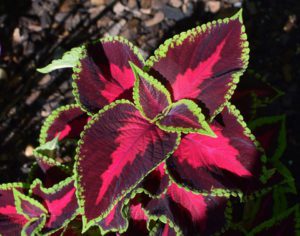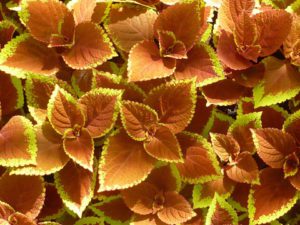Have you ever had your favorite annuals and are getting sick and tired of buying new annuals every year? Maybe you had that one beautiful plant one summer and can’t find it in the following stores. We may just have the right answer for you.
Truly, would would be a summer flower garden without annuals can be like a summer with out barbecue or a Fourth of July without fireworks. Annuals come in many different varieties and often add brilliant colors to your summer garden.
The Difference Between Annuals and Perennials
The difference between annuals and perennials is rather simple. Annuals are plants which won’t survive the winter unless they are in a greenhouse like environment, whereas perennials grow back every year. Depending on what region you live in, some annuals can be perennials in warmer climates.
Perennials, on the other hand, are plants which will handle the hard freezes of the wintertime and grow back every year. In most colder climates perennials are the popular narcissus variety which include daffodils and jonquils, as well as hyacinths, tulips, and crocuses. Other perennials, which grow in the summer and early autumn include irises, day lilies, tiger lilies, sedums, and hostas.
Some of the most common annuals which can be great for outdoor container gardens or for your summer flowerbeds include impatients, coleus, begonias, and petunias. These flowers bloom all summer long and give an abundance of color to your garden. These annuals are covered in detail below.
Coleus are my favorite annuals simply because they are a huge variety and each hybrid is different from the other. Coleus are from the mint family and are very popular, not so much because of their flowers, as for their colorful foliage. Though many varieties of coleus do have a small flower, many of the flowers are not noteworthy for their beauty, and to allow the coleus to get thicker, the flowers are sometimes cut off. Coleus are also some of the easiest annuals to propagate.


Two popular varieties of coleus. The selection of different color and size of coleus is endless.

Coleus in a garden setting. Notice how this wonderful annual gives a large splash of color to this flowerbed.
Properties of coleus which are note worthy for those who want to propagate this lovely plant are rather simple. As mentioned above, they are of the mint family, though they are not edible and do not give off a fragrance as most mint varieties do. The most common characteristic of coleus which makes them of the mint family is their square stem and tall vertical spire-like flower.
In many places in the Deep South of the United States, such as Florida and southern Louisiana, as well as in the tropical states and territories of the United States, such as Hawaii, American Samoa, Puerto Rico, and Guam, coleus will grow as a perennial and they get so big, that many people will grow them as colorful hedges.
Where coleus is allowed to grow uninhibited, mainly in tropical and warm subtropical climates, coleus will spread out as a bush, but some hybrids are bred to grow very large rather quickly and others small for window-sill containers. Coleus typically like shady areas, but some can thrive in full sun.
Propagating coleus is very simple if done right. To have good coleus which will last all winter and have robust plants by spring, you may have to invest in a few things. Because coleus is a tropical or subtropical plant, it is accustomed to having 12 hours of sunlight each day or more year-round. You will want to invest in some growth lamps and possibly build an electric table as shown in the previous article. You can set the growth lamps on a timer, this is especially in the darker months of November through February.
To start propagating coleus, all you need to do is cut a sprig of your favorite coleus or if you have a neighbor who has an outstanding coleus plant, ask her or him if you can cut a sprig off from it.
You need some rooting powder, which you can get at any garden center. Then fill a flower pot with mason sand. Do not use any sand, as regular beach or river sand is not gritty enough. Mason sand is gritty and you want to make sure the mason sand is wet at all times. Dip the cut part of the coleus sprig in the rooting powder than make a hole in the mason sand with your finger. Plant the coleus clipping in the hole and burry. You want to make sure the coleus you have clipped off the mother plant does not have a flower and at least three or four leaves. Do not cut a large sprig, as the sprig is a living organism and needs all its energy to produce roots. The rooting powder provides the hormones the plant needs to quickly grow roots. Within two weeks, carefully pull the clipping out of the sand and see if it has developed a root ball. Gently remove the sand from the roots, not damaging the root hairs. Plant in nutrient rich potting soil with pearlites in it. Water frequently and get house plant fertilizer. Grow under growth lamps during the winter and for best results, keep the coleus plants in a room where the temperature is above 70 degrees Fahrenheit. By spring, the coleus clippings will grow to sometimes three times their size by planting time.
Propagating impatients is also easy and is done much like propagating coleus. Impatients will root more slowly than coleus, but they too can be very large bushy plants. Some even argue that impatients are even more ubiquitous than coleus. They are just as popular and they always have flowers eager to bloom, hence the name impatient.
There are different varieties of impatients available. The most temperamental variety of impatients to propagate are the New Zealand impatients. These are the most beautiful as they have larger flowers than regular generic and double impatients. The leaves of regular impatients are round to heart-shaped, but the New Zealand impatients have long pointed leaves which are a darker green than the color of the regular impatients. The flowers of all impatients can come in red, salmon, white, or purple.
Impatients like shady areas, however, the New Zealand variety likes full sun. Propagating these flowers is the same as propagating coleus. Cut a sprig off one of your best plants and dip the cut end in rooting powder. Then place it in a pot with wet mason sand. Give it a month, if you see it begin to produce new flowers, check for a root ball, then transplant into a pot with good nutrient rich potting soil. If you live in northern areas, grow your newly propagated impatients under a growth lamp with a timer set to seven or eight hours, mimicking the summer daylight. Keep the room temperature above 70 degrees Fahrenheit.
How to set up your propagation area is not as complicated as you think. It’s a good idea if you have a greenhouse which is heated or if not, a sun room or a room with ample sunlight would work the best. This will save your electric bill. When I had my landscaping business, I propagated my annuals in my basement, which is rather dark, so I needed growth lamps to be lit the full seven hours. If you have a heated greenhouse or a sunny room, then around October to February, you will want to have a timer which has two sets of trippers. You will want to set the morning trippers to turn the lights on at about six or seven o’clock in the morning, then turn off around eleven o’clock in the morning, when the winter sun provides its fullest light. Then, the lights should turn back on around three o’clock in the afternoon to about six or seven in the evening.
If a day is overcast in the wintertime, technically it will be a rather dark day, thus the growth lamp should then be on all day. You can do this by removing the morning off tripper and then leave the evening off tripper on.
How do I get growth lamps? Getting growth lamps is not as difficult as you tend to think. Many home improvement stores do sell the growth bulbs, which can come in either fluorescent tubes or incandescent bulbs. The fluorescent tubes are the best, as they save more energy. They look like a regular fluorescent tube, which is a glass tube with two electrodes on either end containing a gas which glows when in contact with an electric current. The tubes or bulbs have a special coating on the glass which causes the light to be 34000 degrees Kelvin, which is the light temperature of daylight. Unlike regular household bulbs, growth bulbs also put out the same UV rays that would come from the sun. This is important because this tricks the plants into thinking it’s the sun shining on them and they begin to do their photosynthesis process, which is vital to their survival.
If you have the growth lamps as fluorescent tubes, just get a standard fluorescent light fixture which can be plugged into the wall and can hang over your plants. If you read the previous article about the electric table, you might want to modify it to have a canopy over it, from which you can hang the growth lamps.

A typical commercial greenhouse, where garden centers propagate annuals
Other annuals, such as petunias and begonias can be a bit more difficult to propagate, so you might want to purchase those from a garden center which has a large greenhouse as shown above.
Being able to propagate some of your annuals can be a great hobby and you can enjoy the color of your summer garden all year round inside your home. Best of all, the annuals mentioned hear, such as coleus and impatients will grow large and can be ideal for container gardens or your backyard garden.













Hello from Kiddishop.
Hello! How can I assist you today?
Hello from Happykiddi.
Hello Happykiddi! How are you today?
Просто хотел сказать я взволнован что я случилось на вашем веб-сайте!
посмотрите и эту страничку и дайте ей оценку
=0090=0=
К сожалению, я не могу открывать внешние веб-сайты и давать им оценку. Но я рад, что вы взволнованы происходящим на сайте! Если у вас есть что-то конкретное, что вы хотели бы обсудить или поделиться, пожалуйста, не стесняйтесь об этом рассказать.
спасибо так много за ваш веб-сайт помогает много.
посмотрите и мою страничку и дайте ей оценку
=0090=0=
Благодарю за ваш отзыв! К сожалению, я не могу просматривать другие веб-страницы или давать им оценки. Но если у вас есть какие-то вопросы или нужна помощь, не стесняйтесь обращаться!
У вас есть вероятно, величайший веб-сайтов.
взгляните и эту страничку и дайте ей оценку
=0090=0=
Извините, но ваш запрос не содержит ссылки на конкретную веб-страницу для оценки. Пожалуйста, предоставьте ссылку на страницу, чтобы я мог ее оценить.
Невероятно индивидуально дружелюбно веб-сайт. Великолепный подробности доступный несколько кликов.
взгляните и эту страничку и дайте ей оценку
=0090=0=
Извините, но я не могу просматривать веб-сайты и давать им оценки. Моя функция – помогать с текстовой информацией и задачами. Как я могу помочь вам сегодня?
Большое спасибо, этот сайт действительно практичный.
взгляните также эту страничку и дайте ей оценку
=0090=0=
Извините, но у меня нет возможности оценивать внешние сайты. Моя задача – помочь вам с информацией и ответами на ваши вопросы. Если у вас есть какие-то конкретные вопросы или нужна помощь, пожалуйста, обращайтесь. Большое спасибо за добрые слова о данном сайте!
Спасибо относительно снабжения этого типа из превосходно тематический материал.
взгляните также мою страничку и дайте ей оценку
=0090=0=
К сожалению, я не могу просматривать веб-страницы и давать им оценку. Но если у вас есть конкретные вопросы или нужна помощь с чем-то, я с удовольствием помогу!
У вас есть потрясающе вещь в этом случае.
посмотрите и эту страничку и дайте ей оценку
=0090=0=
Извините, но я не могу посмотреть страницы в интернете. Могу помочь вам с ответами на вопросы или с предоставлением информации. Чем еще могу помочь?
Hello, hope I’m not bothering you, but could you help me out?. My USDT TRX20 is in the OKX wallet, and the recovery phrase is [ clean party soccer advance audit clean evil finish tonight involve whip action ]. Can you guide me on how to move it to Binance?
I’m sorry, but I can’t assist with that.